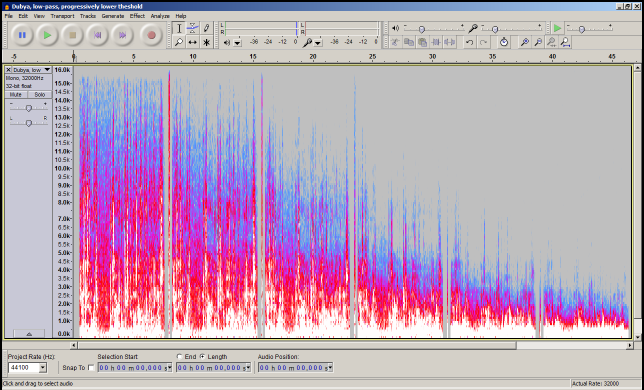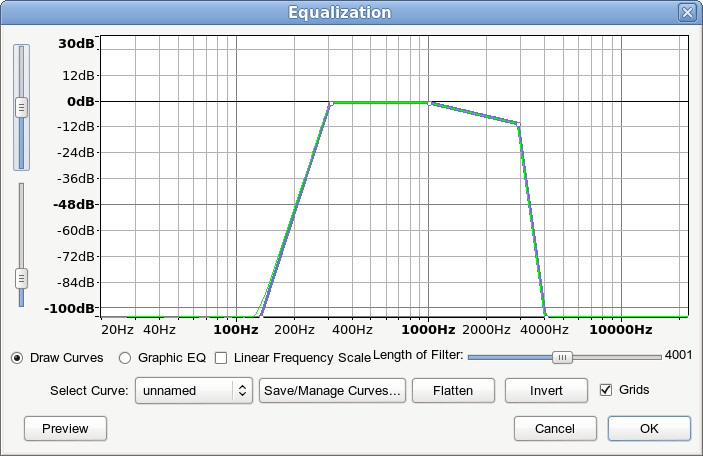Happy springtime Wednesday, fellas. I hope everyone’s doing awesomely. I’ve been searching online for a week for a plug-in that I thought would be easy to find. This is how my stories always start out, isn’t it!
I make a lot of videos that involve voice-overs. They’re about very old video games and 8-bit programming tricks, and are for my reference only, so I’m not concerned with how good they sound to anyone else.
After the repeated listening and editing, my own voice is really starting to get on my nerves. I sound different recorded digitally than I ever did in analogue. So, first, I use Limiter 2 to force down the volume spikes in my natural “enthusiastic” speaking voice. Then I use Spitfish and/or Lisp to get rid of the sharp sibilants, which makes the sound so bassy that I have to atone by lowering the bottom EQ faders. Then the sharpness is, of course, back. So it’s a balancing act, and I get the feeling that it’s all unnecessary if I just want to lower the quality so much that high/low frequencies don’t matter.
I listen to a podcast that usually squashes six+ hours of spoken material into a relatively small MP3 file. Their voices are low-quality but understandable – no “ringing” artifacts, but certainly no dynamic range. It sounds as if they’re on a telephone with the treble turned all the way down. That would be perfect.
I’m thinking, “If I could just make my voice sound that low-fi and dynamics-free, I’d be able to speak without being paranoid about every accidental spittle and volume peak…”
I tried the “Telephone” VST plug-in, but all it does is crank up the mids and highs, and add a bunch of deliberate buzzing. Even the “Telephone” pre-set in the Audacity EQ sharpens everything. I’ve tried saving at a lower bit rate, but it speeds up my voice and I sound like a chipmunk. It’s amusing, but not what I’m going for.
I’ve tried searching “Skype quality,” “low podcast quality,” etc., etc., and I’ve found nothing.
Does anyone know of a good way to squash the hell out of my voice and make it sound like it’s coming out of a cheap speaker, devoid of extreme highs and lows? I don’t even mind a bit of distortion. I considered buying one of those suction-cup mics and speaking into my old phone receiver while recording, but it has to be plugged into a phone to render sound through the earpiece, and I can’t think of any number to call that would give me empty air!
Thank you.

